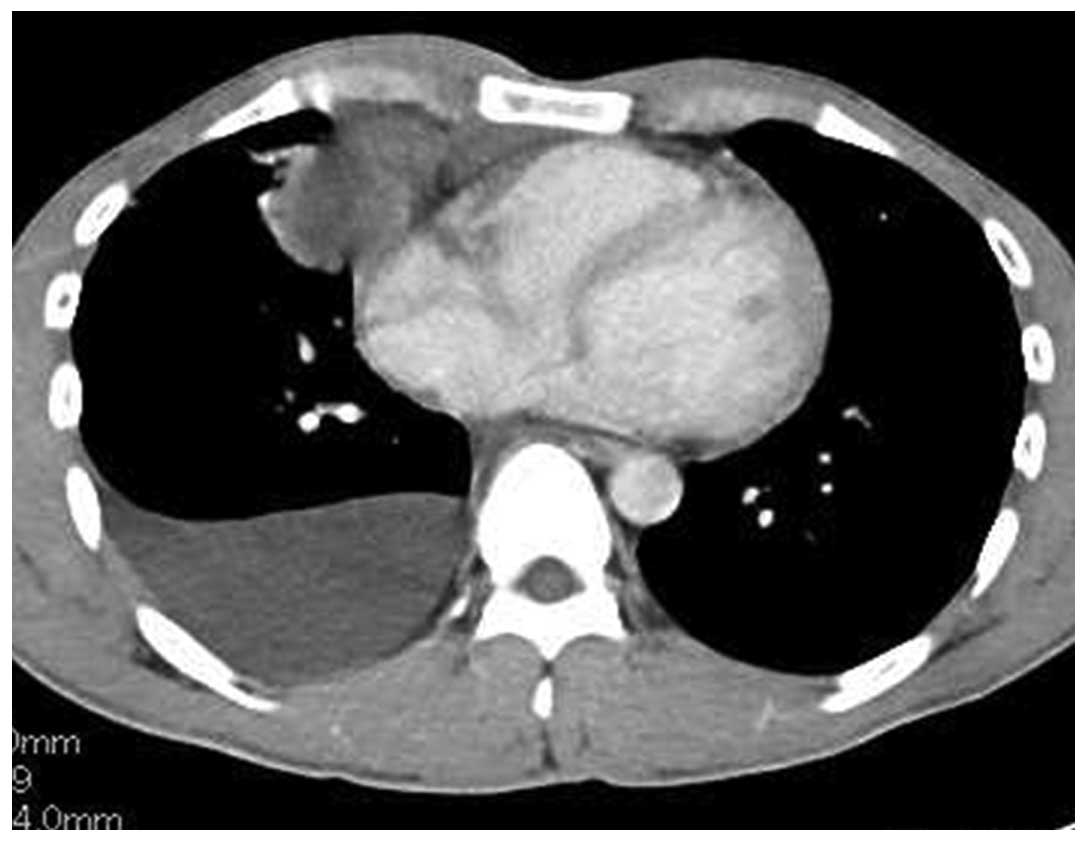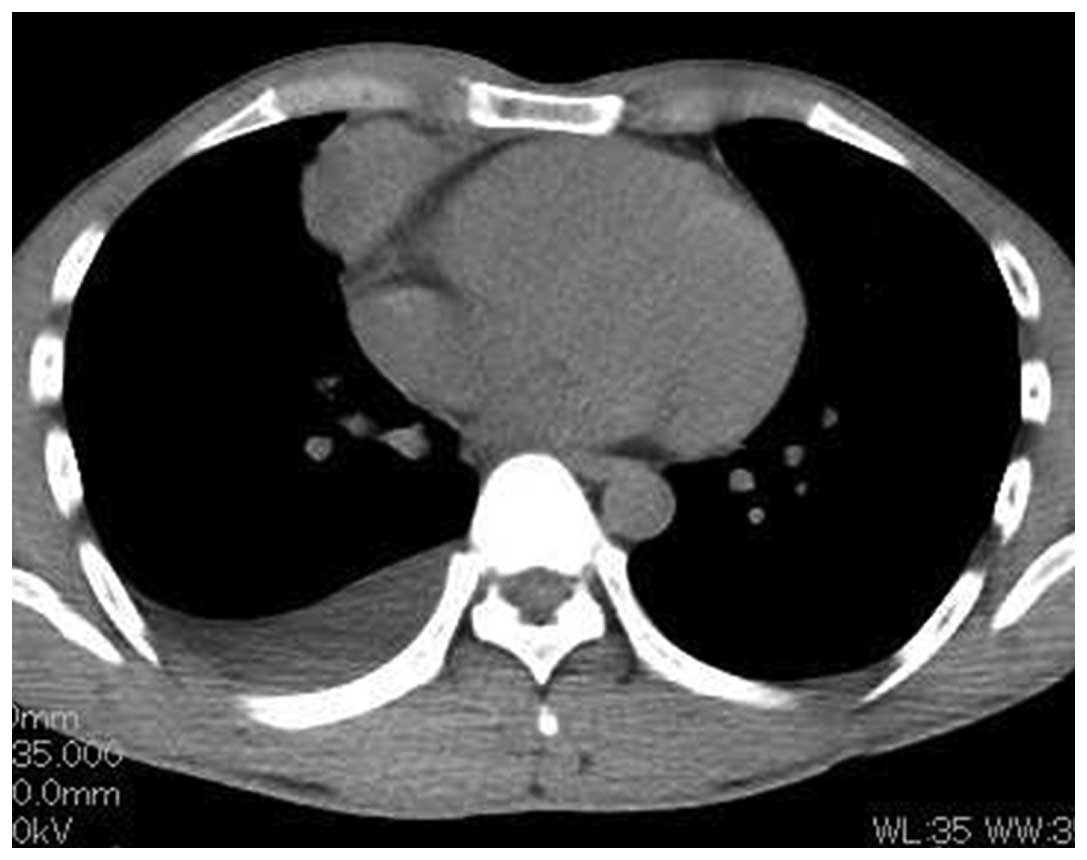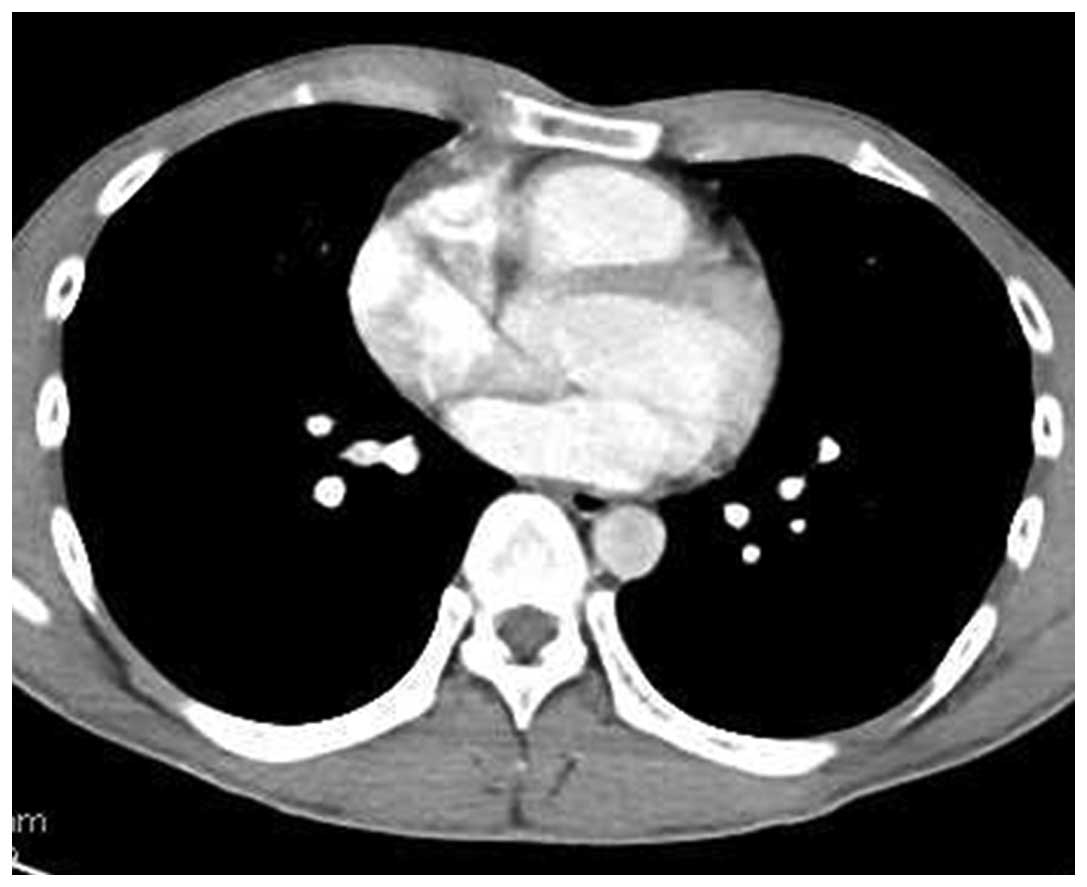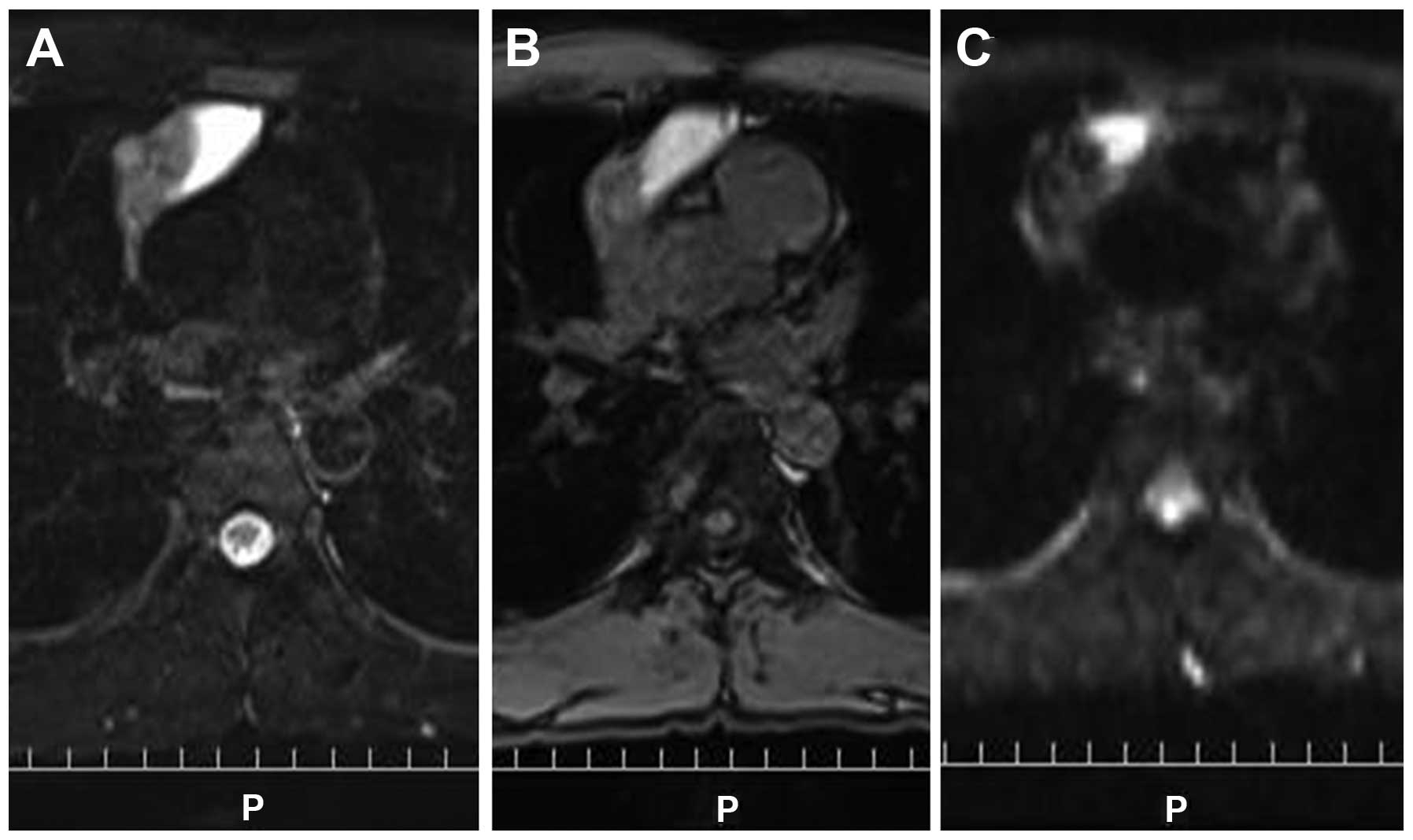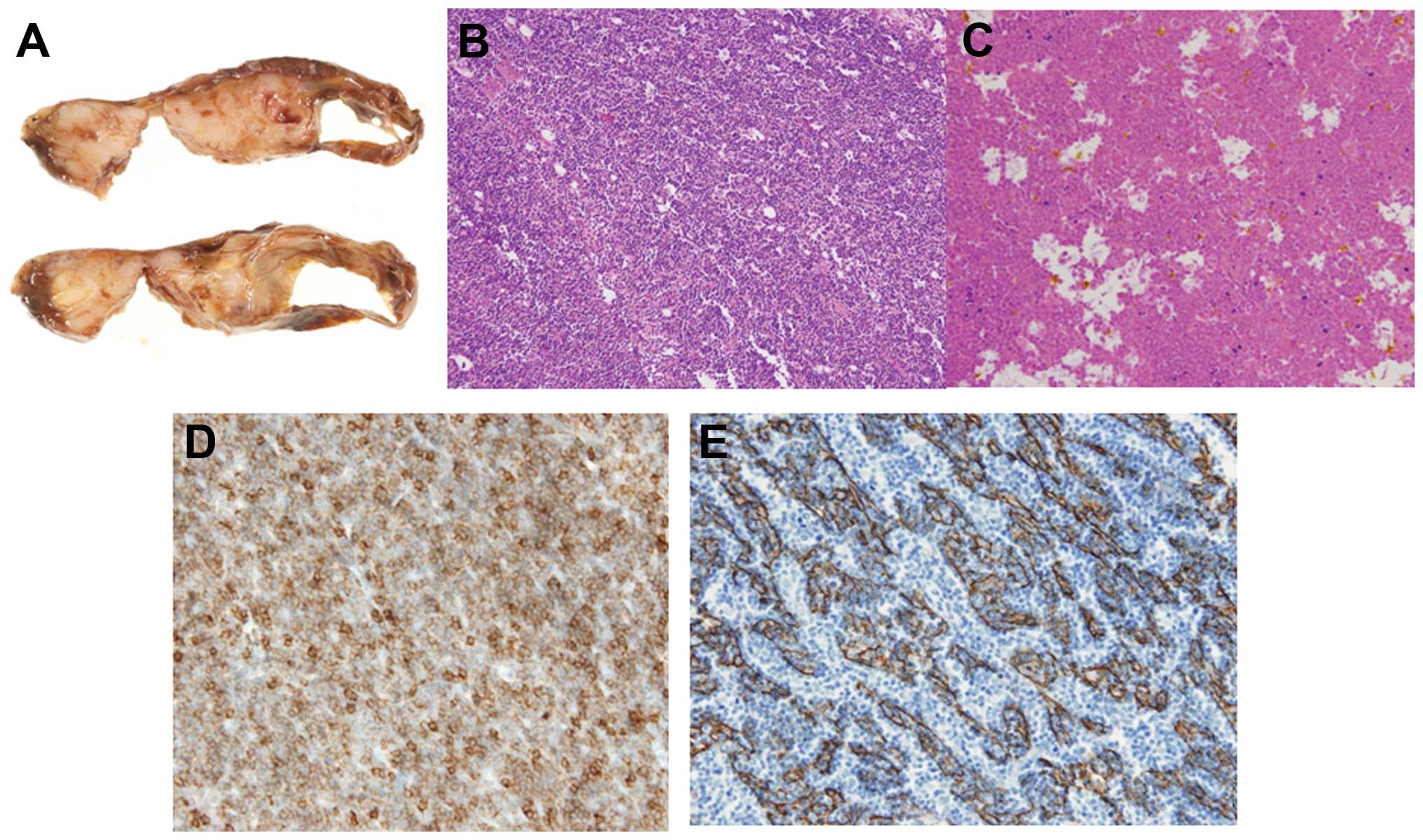Spandidos Publications style
Furuya K, Isobe K, Sano G, Kaburaki K, Gocho K, Ishida F, Kikuchi N, Sugino K, Sakamoto S, Takai Y, Takai Y, et al: Thymoma exhibiting spontaneous regression in size, pleural effusion and serum cytokeratin fragment level: A case report. Mol Clin Oncol 3: 1058-1062, 2015.
APA
Furuya, K., Isobe, K., Sano, G., Kaburaki, K., Gocho, K., Ishida, F. ... Homma, S. (2015). Thymoma exhibiting spontaneous regression in size, pleural effusion and serum cytokeratin fragment level: A case report. Molecular and Clinical Oncology, 3, 1058-1062. https://doi.org/10.3892/mco.2015.583
MLA
Furuya, K., Isobe, K., Sano, G., Kaburaki, K., Gocho, K., Ishida, F., Kikuchi, N., Sugino, K., Sakamoto, S., Takai, Y., Otsuka, H., Hata, Y., Iyoda, A., Wakayama, M., Shibuya, K., Homma, S."Thymoma exhibiting spontaneous regression in size, pleural effusion and serum cytokeratin fragment level: A case report". Molecular and Clinical Oncology 3.5 (2015): 1058-1062.
Chicago
Furuya, K., Isobe, K., Sano, G., Kaburaki, K., Gocho, K., Ishida, F., Kikuchi, N., Sugino, K., Sakamoto, S., Takai, Y., Otsuka, H., Hata, Y., Iyoda, A., Wakayama, M., Shibuya, K., Homma, S."Thymoma exhibiting spontaneous regression in size, pleural effusion and serum cytokeratin fragment level: A case report". Molecular and Clinical Oncology 3, no. 5 (2015): 1058-1062. https://doi.org/10.3892/mco.2015.583















